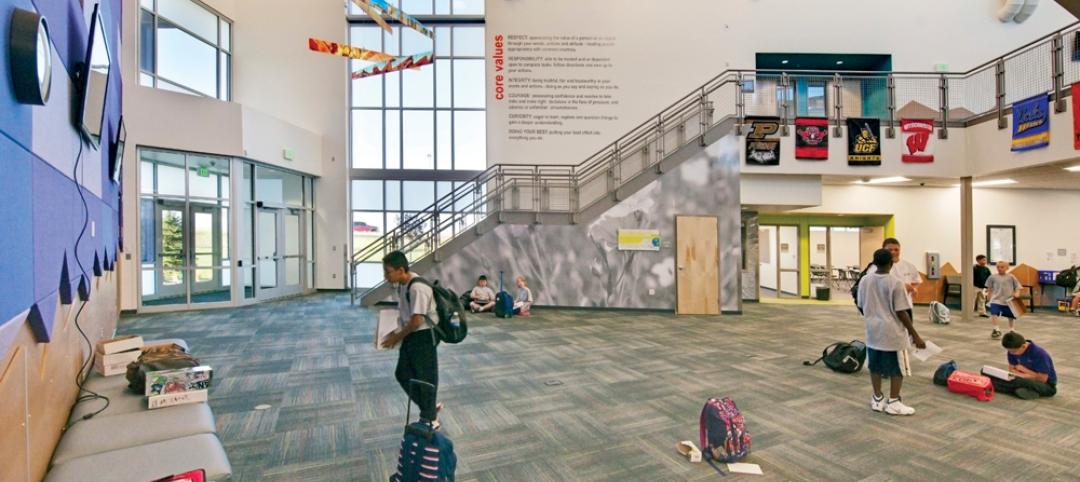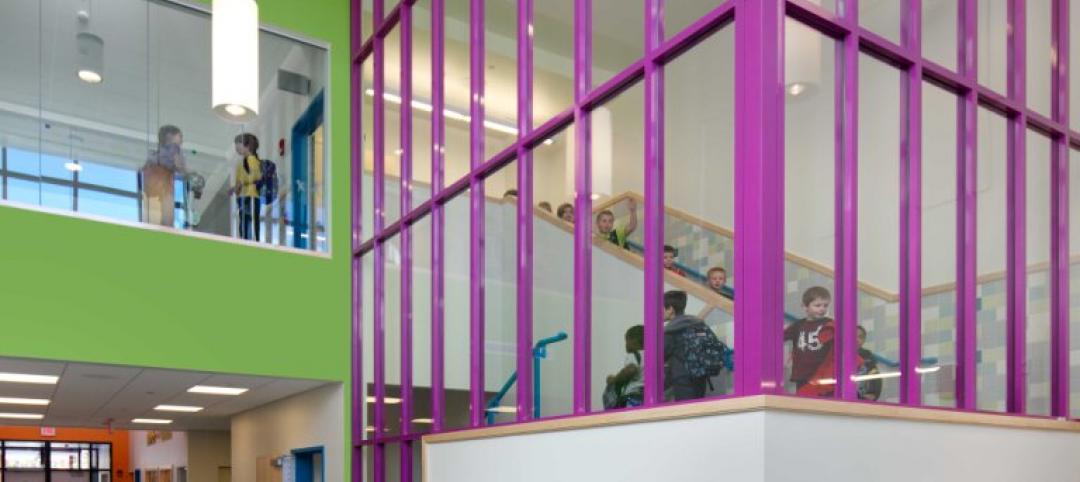Worcester, Mass., is the birthplace of vocational education, beginning with the pioneering efforts of Milton P. Higgins, who opened the Worcester Trade School in 1908. The school's original facility served this central Massachusetts community for nearly 100 years until its state-of-the-art replacement opened in 2006 as the 1,500-student Worcester Technical High School.
Getting the new 400,000-sf school opened, however, once again required pioneering efforts that earned this project and its Building Team a Special Recognition Award for overcoming significant challenges, including an environmentally sensitive site, tight funding, and labor union issues.
The school's 21-acre site in the city's Green Hill Park included wetlands with vernal pools, a 16-acre landfill, and a two-year legal dispute with neighbors over environmental and parkland issues. A formal partnering charter ultimately allayed neighborhood and environmental concerns. The school was repositioned on the site, and improvements were made to the wetlands and vernal pools, which now serve as leaning labs for the school's Environmental Technology program. The landfill was capped and converted for use as the school's athletic fields.
Funding was one of the project's biggest obstacles. To offset the school's approximately $90 million total cost (construction costs: $68 million; equipment: $22 million), the school's advisory board created “entrustment” programs, which involved partnerships with businesses, manufacturers, and major suppliers—notably Dell Computers, Cisco Systems, Toyota, and Redken 5th Avenue—to provide equipment and industry expertise in return for the school's exclusive use of their products.
Labor union issues were resolved through a deal brokered by the city's mayor and Consigli Construction (general contractor in a joint venture with O'Connor Constructors) that allowed non-union trades to bid the project. Originally, only union trades were allowed to bid, but that prevented the school's alumni who weren't union members or employees of union signatory firms from submitting bids. Trades winning their bids served as mentors to the school's current students, who gained valuable hands-on experience by helping complete their new school two months early and on budget.
|
Related Stories
Sponsored | | Oct 29, 2014
Historic Washington elementary school incorporates modular design
More and more architects and designers are leveraging modern modular building techniques for expansion projects planned on historical sites. SPONSORED CONTENT
| Oct 26, 2014
Study asks: Do green schools improve student performance?
A study by DLR Group and Colorado State University attempts to quantify the student performance benefits of green schools.
| Oct 21, 2014
Check out BD+C's GreenZone Environment Education Classroom debuting this week at Greenbuild
At the conclusion of the show, the modular classroom structure will be moved to a permanent location in New Orleans' Lower 9th Ward, where it will serve as a community center and K-12 classroom.
| Oct 16, 2014
Perkins+Will white paper examines alternatives to flame retardant building materials
The white paper includes a list of 193 flame retardants, including 29 discovered in building and household products, 50 found in the indoor environment, and 33 in human blood, milk, and tissues.
Sponsored | | Oct 16, 2014
Mill Brook Elementary School colors outside the lines with creative fire-rated framing solution
Among the building elements contributing to the success of the elementary school’s public learning areas is a fire-rated stairwell that supports the school’s vision for collaboration. HMFH Architects designed the stairwell to be bright and open, reflecting the playful energy of students. SPONSORED CONTENT
| Oct 15, 2014
Harvard launches ‘design-centric’ center for green buildings and cities
The impetus behind Harvard's Center for Green Buildings and Cities is what the design school’s dean, Mohsen Mostafavi, describes as a “rapidly urbanizing global economy,” in which cities are building new structures “on a massive scale.”
| Oct 12, 2014
AIA 2030 commitment: Five years on, are we any closer to net-zero?
This year marks the fifth anniversary of the American Institute of Architects’ effort to have architecture firms voluntarily pledge net-zero energy design for all their buildings by 2030.
| Oct 9, 2014
Regulations, demand will accelerate revenue from zero energy buildings, according to study
A new study by Navigant Research projects that public- and private-sector efforts to lower the carbon footprint of new and renovated commercial and residential structures will boost the annual revenue generated by commercial and residential zero energy buildings over the next 20 years by 122.5%, to $1.4 trillion.
| Sep 29, 2014
Living Building vs. LEED Platinum: Comparing the first costs and savings
Skanska USA's Steve Clem breaks down the costs and benefits of various ultra-green building standards and practices.
| Sep 24, 2014
Architecture billings see continued strength, led by institutional sector
On the heels of recording its strongest pace of growth since 2007, there continues to be an increasing level of demand for design services signaled in the latest Architecture Billings Index.














